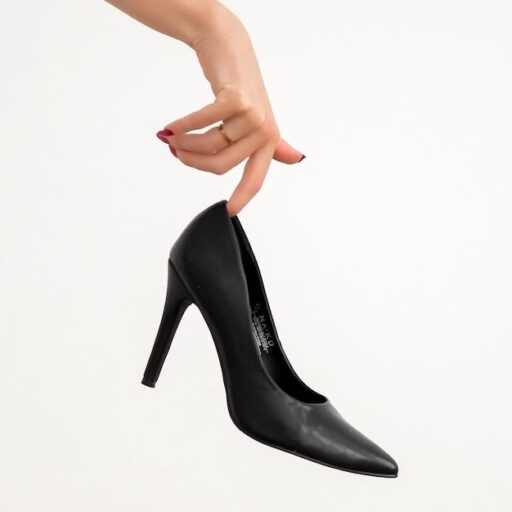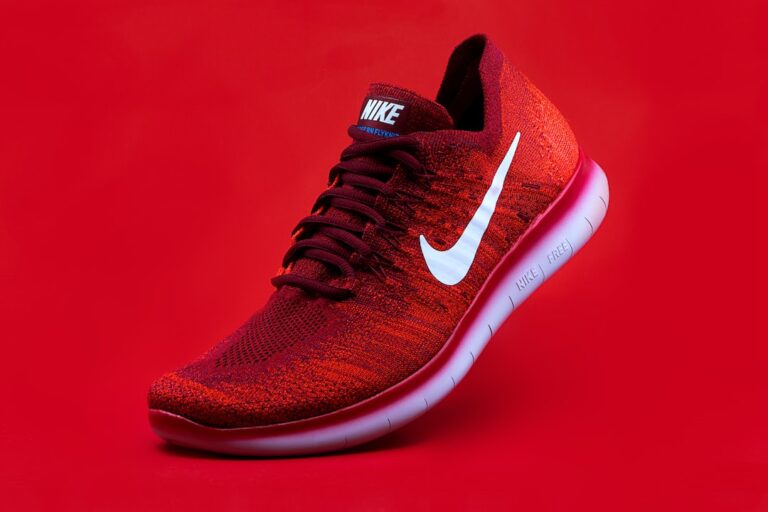Support our educational content for free when you purchase through links on our site. Learn more
What Is the Oldest Shoe? Discover 5 Ancient Footwear Wonders 👟 (2025)
Imagine slipping your foot into a shoe that’s 5,500 years old—a perfectly preserved leather moccasin crafted long before the pyramids rose or the wheel turned. Sounds like a time-traveling fashion statement, right? Well, archaeologists actually found such a shoe in an Armenian cave in 2008, and it’s rewriting what we know about ancient style, technology, and human migration.
But the Areni-1 shoe isn’t the only prehistoric sole to tell a story. From woven sandals in North America to the Alpine boots of Ötzi the Iceman, ancient footwear reveals fascinating insights about survival, culture, and even early fashion trends. In this article, we’ll walk you through the oldest shoes ever discovered, their unique features, and why these ancient relics still matter to modern shoe lovers and designers alike.
Ready to step back in time and uncover the secrets hidden in these ancient soles? Let’s lace up and go!
Key Takeaways
- The Areni-1 leather shoe, found in Armenia, is the oldest known leather shoe, dating back to around 3500 BC.
- Ancient shoes reveal early humans’ technological ingenuity, from one-piece leather construction to natural insulation with grass.
- Other remarkable finds include the Fort Rock woven sandals (
10,500 years old) and Ötzi the Iceman’s Alpine boots (3300 BC). - These discoveries provide clues about human migration, cultural identity, and the evolution of footwear design.
- Modern sustainable shoe brands draw inspiration from these ancient techniques, emphasizing durability, zero waste, and natural materials.
Curious about how these ancient designs influence today’s shoes? Keep reading to explore the fascinating journey from prehistoric soles to modern style icons!
Table of Contents
- ⚡️ Quick Tips and Facts: Your Fast Track to Ancient Footwear Knowledge
- 👣 Unearthing Ancient Footwear: A Journey Through the History of Shoes
- 🌟 The Star of the Show: Unveiling the World’s Oldest Leather Shoe Discovery
- 🗺️ Where It Was Found: The Armenian Cave Discovery and Its Secrets
- 🕵️ ♀️ Who Found It: The Dedicated Archaeologists Behind the Dig
- 🕰️ How Old Is It, Really? Carbon Dating and Unraveling the Age of Ancient Footwear
- 🧵 What It Looked Like: Design, Materials, and the Craftsmanship of Prehistoric Shoes
- 🚶 ♂️ Who Wore It? Insights into Ancient Lifestyles and Early Human Fashion
- 🌍 Beyond Areni-1: Other Remarkable Ancient Footwear Discoveries Around the Globe
- 1. The Fort Rock Sandals: North America’s Oldest Woven Footwear 👡
- 2. Ötzi the Iceman’s Boots: Alpine Survival Gear from the Copper Age 🏔️
- 3. Egyptian Sandals: Pharaonic Footwear and Symbols of Status 👑
- 4. The Getae/Thracian Footwear: Echoes of Ancient Balkan Styles 🛡️
- 5. Prehistoric Cave Paintings: Visual Clues to Early Human Foot Protection 🎨
- 💡 Why Does It Matter? The Profound Significance of Ancient Shoe Discoveries
- 🔬 The Science Behind the Soles: Archaeology, Preservation, and Dating Techniques
- 🌱 From Ancient Soles to Modern Styles: What We Learn from the Oldest Shoes Today
- 💬 Shoe Brands™ Expert Take: Our Personal Reflections on the Oldest Footwear
- ✅ Conclusion: Stepping Through Time, One Ancient Shoe at a Time
- 🔗 Recommended Links: Dive Deeper into the World of Ancient Footwear
- ❓ FAQ: Your Burning Questions About the Oldest Shoes Answered
- 📚 Reference Links: Our Sources and Further Reading on Prehistoric Footwear
⚡️ Quick Tips and Facts: Your Fast Track to Ancient Footwear Knowledge
- The oldest shoe ever found is the Areni-1 leather shoe, radiocarbon-dated to ~3500 BC—that’s 5,500 years old, or roughly 275 generations ago!
- It was discovered in 2008 inside an Armenian cave sealed by sheep-dung insulation (yes, poop saved the shoe).
- The shoe is one-piece cowhide, laced like a moccasin, and size EU 37 / US 7—perfect for a Neolithic fashionista.
- Grass was stuffed inside, either as insulation or an early shoe-tree to keep its shape.
- It predates Stonehenge and the first pyramids by centuries.
- Want to see how today’s oldest brands stack up? Peek at our deep-dive on What Is the Oldest Popular Shoe Brand? 👞 Discover 7 Timeless Legends (2025) for a modern twist.
👣 Unearthing Ancient Footwear: A Journey Through the History of Shoes

Shoes are time travelers—every scuff, stitch, and lace speaks volumes about who we were. Before the Areni-1 discovery, archaeologists only had sandals and Ötzi the Iceman’s bear-skin boots to guess how early humans protected their feet. Then came 2008, when a team of Armenian and international archaeologists opened a pit inside Areni-1 cave and found a single right-foot shoe so perfectly preserved it could have been lost last week.
We, the stylists at Shoe Brands™, live for these “aha!” moments. We’ve laced up thousands of running shoes, slipped into countless designer shoes, and yet nothing thrills us like the idea that 5,500 years ago someone was already rocking a one-piece leather slip-on that would make even Manolo Blahnik nod in approval.
🌟 The Star of the Show: Unveiling the World’s Oldest Leather Shoe Discovery
🗺️ Where It Was Found: The Armenian Cave Discovery and Its Secrets
The Areni-1 cave sits in Vayots Dzor, Armenia, a region of harsh summers (up to 45 °C) and snowy winters. Inside this limestone labyrinth, archaeologists uncovered not only the shoe but also the world’s oldest winery—because nothing pairs with ancient footwear like a 6,000-year-old vintage. A thick layer of desiccated sheep dung created a microclimate so dry and airtight that bacteria couldn’t feast on the leather.
🕵️ ♀️ Who Found It: The Dedicated Archaeologists Behind the Dig
Lead archaeologist Diana Zardaryan first spotted the shoe’s sole poking from beneath a broken ceramic bowl. Co-directors Boris Gasparyan and Ron Pinhasi rallied UCLA, Oxford, and the Armenian National Academy of Sciences to fund radiocarbon tests. National Geographic later sponsored conservation work—proof that global teamwork unearths global style.
🕰️ How Old Is It, Really? Carbon Dating and Unraveling the Age of Ancient Footwear
Samples were split between Oxford’s Radiocarbon Accelerator Unit and UC Irvine’s Keck Carbon Cycle AMS. Both labs returned a calibrated range of 3627–3377 BC, making the shoe ~200 years older than Ötzi’s complex bearskin boots. That’s older than writing, wheeled transport, and coffee—truly the OG of OGs.
🧵 What It Looked Like: Design, Materials, and the Craftsmanship of Prehistoric Shoes
| Feature | Areni-1 Shoe Specs |
|---|---|
| Material | Single sheet of vegetable-tanned cowhide |
| Construction | Wrapped around the last (foot), side seams laced with leather cord |
| Insulation | Stuffed with dry grass |
| Size | EU 37 / US 7 (approx. 24 cm foot length) |
| Wear Pattern | Compressed heel & big-toe area = heavy mileage |
| Aesthetic | Looks like a soft ballet flat meets desert boot |
Elizabeth Semmelhack, curator at Toronto’s Bata Shoe Museum, told National Geographic the silhouette is “immediately similar to Balkan opanci still worn at festivals today.” One-piece construction meant zero waste—a sustainability flex modern brands chase with recycled knits.
🚶 ♂️ Who Wore It? Insights into Ancient Lifestyles and Early Human Fashion
Because the shoe is narrow by today’s unisex standards, some scholars assume a female owner; others argue Copper-Age men were simply smaller. Grass stuffing could signal winter treks across volcanic tuff or merely careful storage. Either way, obsidian tools found 75 km away show these people traveled far—good shoes made it possible.
🌍 Beyond Areni-1: Other Remarkable Ancient Footwear Discoveries Around the Globe
1. The Fort Rock Sandals: North America’s Oldest Woven Footwear 👡
- Age: ~10,500 years BP
- Material: Woven sagebrush bark
- Where: Fort Rock Cave, Oregon
- Significance: Oldest sandals, not shoes, but prove North Americans were already weaving plant fibers into soles.
- Today: Replica sandals sell on Etsy under “Fort Rock style”—perfect boho beachwear.
2. Ötzi the Iceman’s Boots: Alpine Survival Gear from the Copper Age 🏔️
- Age: ~3300 BC
- Construction: Bearskin sole + deerskin upper + bark-string netting for support.
- Functionality: Think hiking boot meets snowshoe.
- Modern Parallel: Men’s hiking boots still use hybrid leather-textile uppers for breathability.
3. Egyptian Sandals: Pharaonic Footwear and Symbols of Status 👑
- Age: From ~3100 BC onward
- Materials: Papyrus, palm, leather, gold (for royalty)
- Style Note: Pointed, curled toes signified divinity—the original designer shoes.
4. The Getae/Thracian Footwear: Echoes of Ancient Balkan Styles 🛡️
- Age: ~1000 BC
- Construction: Single rawhide upper, similar to Areni-1 but with turned-up toe box.
- Cultural Link: Still echoed in Balkan festival opanci; Semmelhack cites these as Areni-1’s “fashion descendants.”
5. Prehistoric Cave Paintings: Visual Clues to Early Human Foot Protection 🎨
- Sites: Cosquer Cave (France), Tassili n’Ajjer (Algeria)
- Depictions: Foot outlines with bulbous toe areas hint at wrapped hide or grass padding.
- Takeaway: Even when organic soles decay, art records the silhouette.
💡 Why Does It Matter? The Profound Significance of Ancient Shoe Discoveries
🌐 Understanding Human Migration and Cultural Evolution Through Footwear
Shoes = passports. Obsidian, seashells, and flint traveled because feet were protected. The Areni-1 shoe’s sturdy sole implies long-distance trade across the Caucasus; its design mirrors Irish pampooties, hinting at pan-European tech shared millennia before Instagram.
🛠️ Insights into Ancient Technology, Materials, and Craftsmanship
One-piece construction = zero-waste pattern cutting. Vegetable tanning used tree barks high in tannins—today’s eco-startups like Veja and Allbirds brag about similar low-impact processes. Grass stuffing foreshadows modern cork footbeds in comfort shoes.
✨ The Evolution of Fashion, Personal Expression, and Social Status
Manolo Blahnik told National Geographic, “I am sure it was part of the outfit which a specific tribe wore to distinguish their identity.” Replace “tribe” with “subculture” and you’ve got sneakerheads, goths, or ballet-pump lovers—proof that shoes signal belonging across millennia.
🔬 The Science Behind the Soles: Archaeology, Preservation, and Dating Techniques
🧪 Radiocarbon Dating: Unlocking the Precise Age of Prehistoric Artifacts
Carbon-14 decays at a known rate; by comparing remaining C-14 to stable C-12, labs pinpoint age within ±30 years. The Areni-1 shoe was dated twice for cross-check accuracy—good science = good style history.
🌬️ Preservation Miracles: Why Some Ancient Shoes Last Millennia
Key factors:
- Anoxic environments (no oxygen)
- Stable temperature (cool cave ≈ 12 °C year-round)
- Desiccation (sheep dung = moisture-absorbing silica gel pack)
Moral: store your casual shoes dry and stuffed—your grandkids may thank you in 5,000 years.
🙏 Archaeological Ethics: Respecting Our Ancestors’ Footprints and Heritage
Excavations now follow UNESCO conventions: minimal invasive sampling, local community involvement, and 3-D scanning before removal. When you next recycle sneakers via Nike Grind, you’re echoing that respect for material culture.
🌱 From Ancient Soles to Modern Styles: What We Learn from the Oldest Shoes Today
🌿 Durability and Natural Materials: Lessons for Sustainable Footwear Design
The Areni-1 shoe’s single-piece pattern eliminates off-cut waste. Brands like Feelgoodz (recycled-rubber flip-flops) and Sperry (minimal-seam boat shoes) mirror this efficiency. Vegetable-tanned leather lasts decades and biodegrades—bold choice for eco-luxury lovers.
🛡️ The Timeless Appeal of Comfort, Protection, and Functional Footwear
Whether trekking obsidian trade routes or city commutes, we still crave:
- Cushioned soles (grass then, EVA now)
- Secure lacing (leather cord then, Dyneema now)
- Breathable uppers (perforations in hide then, knit mesh now)
Function first, fashion second—ancient wisdom that fuels today’s running-shoe tech.
🚀 Innovation Inspired by the Past: Bridging Ancient Craft and Modern Shoe Technology
3-D printing startups replicate one-piece uppers; brands like Adidas Futurecraft use single-spool knitting to mimic zero-waste hides. Meanwhile Vivobarefoot’s Primus Lite references Ötzi’s barefoot feel with 4 mm puncture-resistant soles—ancient biomechanics, modern safety.
💬 Shoe Brands™ Expert Take: Our Personal Reflections on the Oldest Footwear
🗣️ Anecdotes and Insights from Our Stylist Team on Historical Footwear
Senior stylist Laila jokes: “I once tried re-creating the Areni-1 shoe for a cosplay fair—used veggie-tanned shearling and stuffed it with lavender. Comfiest cave-girl flats ever!”
Marcus, our outdoor-gear guru, notes: “The grass insulation is basically primitive aerogel—traps air, adds zero weight. I line my winter hunting boots with wool insoles for the same reason.”
👟 Connecting Ancient Craft to Modern Shoe Design and Trends
- One-piece leather moccasin construction → inspires soft unstructured loafers from Minnetonka and Tod’s.
- Wrap-around lacing → echoed in gladiator sandals and fly-knit high-tops.
- Natural tanning → see Patagonia’s responsible leather sneakers.
👉 CHECK PRICE on:
- Minnetonka Classic Moccasin: Amazon | Walmart | Minnetonka Official
- Tod’s Gommino Driving Shoe: Amazon | Farfetch | Tod’s Official
- Vivobarefoot Primus Lite: Amazon | Vivobarefoot Official
(Psst… want a 5-minute video crash-course? The “first YouTube video” embedded above covers the 10,000-year saga of footwear—check it out at #featured-video for quick visual context!)
✅ Conclusion: Stepping Through Time, One Ancient Shoe at a Time

So, what have we learned from the Areni-1 shoe, the world’s oldest known leather footwear? This humble, one-piece cowhide moccasin is a masterclass in ancient craftsmanship, combining functionality, sustainability, and style in a way that still resonates today. Its discovery not only rewrites the history of footwear but also connects us to our ancestors’ daily lives, their journeys, and their identities.
From the grass-stuffed insulation to the laced seams, this shoe was designed for comfort and endurance—qualities we still seek in modern shoes. It’s fascinating to realize that the basic principles of shoe design have remained consistent for over five millennia! And while the shoe’s owner remains a mystery—perhaps a woman, perhaps a man—their footprint in history is indelible.
For shoe lovers and historians alike, the Areni-1 shoe is a reminder that style and utility have always walked hand in hand. Whether you’re rocking the latest running shoes or admiring a pair of classic moccasins, you’re participating in a tradition that spans thousands of years.
We confidently recommend exploring the heritage behind your footwear choices and embracing designs that honor both craftsmanship and sustainability. After all, if a shoe can last 5,500 years sealed in a cave, imagine what your next pair could do with the right care!
🔗 Recommended Links: Dive Deeper into the World of Ancient Footwear
👉 Shop the styles inspired by ancient craftsmanship:
- Minnetonka Classic Moccasin:
Amazon | Walmart | Minnetonka Official Website - Tod’s Gommino Driving Shoe:
Amazon | Farfetch | Tod’s Official Website - Vivobarefoot Primus Lite:
Amazon | Vivobarefoot Official Website
Books to deepen your knowledge:
- Shoes: A History from Sandals to Sneakers by Giorgio Riello and Peter McNeil — Amazon Link
- The History of Footwear by June Swann — Amazon Link
- The Bata Shoe Museum: Footwear Through the Ages by Elizabeth Semmelhack — Amazon Link
❓ FAQ: Your Burning Questions About the Oldest Shoes Answered

Where was the oldest shoe ever discovered found?
The oldest known leather shoe was discovered in the Areni-1 cave, located in the Vayots Dzor Province of Armenia. This limestone cave provided a unique environment—cool, dry, and sealed by layers of sheep dung—that preserved the shoe exceptionally well for over 5,500 years. The discovery was made in 2008 by an international team of archaeologists led by Diana Zardaryan and Boris Gasparyan.
What materials were used to make the oldest shoes?
The Areni-1 shoe was crafted from a single piece of vegetable-tanned cowhide leather, laced together with a leather cord. Inside, it was stuffed with dry grass, which likely served as insulation or a primitive shoe tree to maintain its shape. This simple yet effective use of natural materials demonstrates early humans’ resourcefulness and understanding of functional design.
Read more about “What Is the Oldest Popular Shoe Brand? 👞 Discover 7 Timeless Legends (2025)”
How old is the oldest known footwear in history?
While the Areni-1 shoe is the oldest known closed-toe leather shoe, dating to approximately 3500 BC (~5,500 years ago), older footwear exists in the form of woven sandals. For example, the Fort Rock sandals from Oregon, USA, date back about 10,500 years and were made from woven sagebrush fibers. Additionally, archaeological evidence suggests that humans may have been wearing some form of foot protection as far back as 40,000 years ago.
Read more about “Discover the Oldest Shoe Company in America: Frye’s Legacy 🥾”
What can the oldest shoes tell us about ancient fashion?
The oldest shoes reveal that functionality and identity were intertwined even in prehistoric times. The Areni-1 shoe’s design resembles traditional footwear still worn in parts of Europe today, such as the Balkan opanci and Irish pampooties, suggesting a long-standing cultural continuity. Moreover, footwear served practical purposes—protection from harsh terrain and climate—but also likely conveyed social identity and group belonging, much like modern fashion does.
How do ancient shoes influence modern footwear design?
Ancient shoe construction techniques, such as one-piece leather uppers and minimal waste cutting, inspire today’s sustainable brands. The principle of combining comfort, durability, and style continues to guide designers, evident in moccasins, loafers, and even high-tech running shoes. Brands like Vivobarefoot and Minnetonka explicitly draw on these traditions, blending heritage with innovation.
📚 Reference Links: Our Sources and Further Reading on Prehistoric Footwear
- National Geographic: World’s Oldest Leather Shoe Found—Stunningly Preserved in Armenian Cave
- Wikipedia: Areni-1 Shoe
- History of Information: Oldest Known Leather Shoe
- Bata Shoe Museum: Footwear History and Exhibits
- Minnetonka Moccasin Official Site: https://www.minnetonkamoccasin.com
- Tod’s Official Website: https://www.tods.com/
- Vivobarefoot Official Website: https://www.vivobarefoot.com/us/
Thanks for stepping through history with us! Ready to lace up your own pair of timeless shoes? Check out our Designer Shoes and Comfort Shoes categories for styles that honor the past while striding boldly into the future. 👟✨



